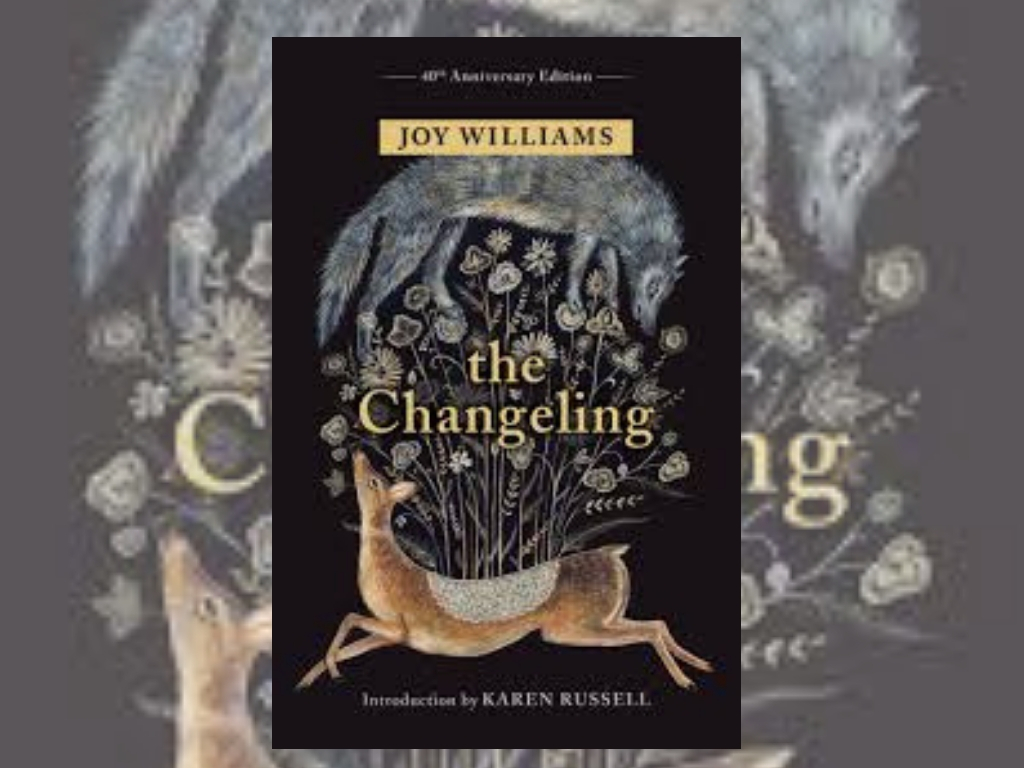
Changelings, or babies swapped with supernatural beings in their infancy, permeate the mythology of a number of cultures throughout Europe. Often, it was believed that fairies had taken the child and left one of their own behind- a sign of bad luck for the family. The idea of a changeling may have been used to explain children who showed symptoms of diseases or disabilities in a time when people did not understand.
Joy Williams‘ 1978 novel The Changeling is the story of Pearl, a young woman who we first meet in a hotel bar, sipping from a glass of gin with a five month old baby nestled in the crook of her arm. She has run away from the baby’s father and his family, all of whom live together on a private island where the custom seems to be that members of the family return to the mainland at regular intervals to ‘steal’ themselves a life partner or, in the case of the Patriarch of the group, and Pearl’s brother in law, a child.
Pearl herself was married to another man when she was caught shoplifting by a man named Walker, who took her first to a hotel room for an affair, and then back to the island as his wife. The first husband was never mentioned, or thought of, again. At the opening of the novel, Pearl has fled, not from Walker, but from Thomas and the group on the island, whose strange behaviour is becoming increasingly unnerving to her. But it is not long before Walker finds her, and the three of them- Walker, Pearl and baby Sam- get on a plane to return ‘home.’ When tragedy strikes, and the plane crashes, Walker is killed, and in the aftermath, Pearl searches for her baby. In the days that follow, she is increasingly convinced that the child she has taken home with her is not her own.
Written in the style of a much earlier classic, the tone of The Changeling is at odds with its subject matter in the most delightful way. While the storytelling style is more akin to Enid Blyton, the nature of the text is often sexual, and even at some points violent. Pearl is a very passive character, and while her paranoia about Sam, and about the changes that seem to be happening to the hoard of children who live on the island (with whom she spends the most time) grows daily, she does little but observe in horror. It is hard to say whether her drinking increases because of what she sees, or if what she sees increases because of how much she is drinking. Pearl is clearly an unreliable narrator, and a drunk, but there is an element of trustworthiness to her, because compared to the other adults on the island, she seems to be the only normal one.
At times written in a modernist stream of conscious style, particularly towards the end as the paranoia comes to a head, The Changeling is a book that must be read slowly, and preferably with a drink in one’s hand. It is unsettling, and contains moments of profound clarity that give away the writer’s proficiency as a short story writer. This edition, prefaced with an introduction by Karen Russell, is sure to introduce this forgotten classic to a brand new generation.
![]()
![]()
![]()
![]()
![]()
THREE STARS (OUT OF FIVE)
The Changeling is published by Tin House Books and is available in Australia via Allen & Unwin
